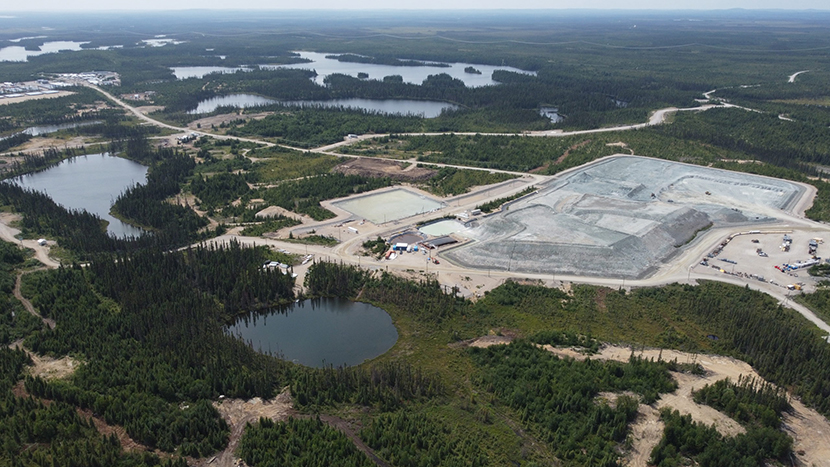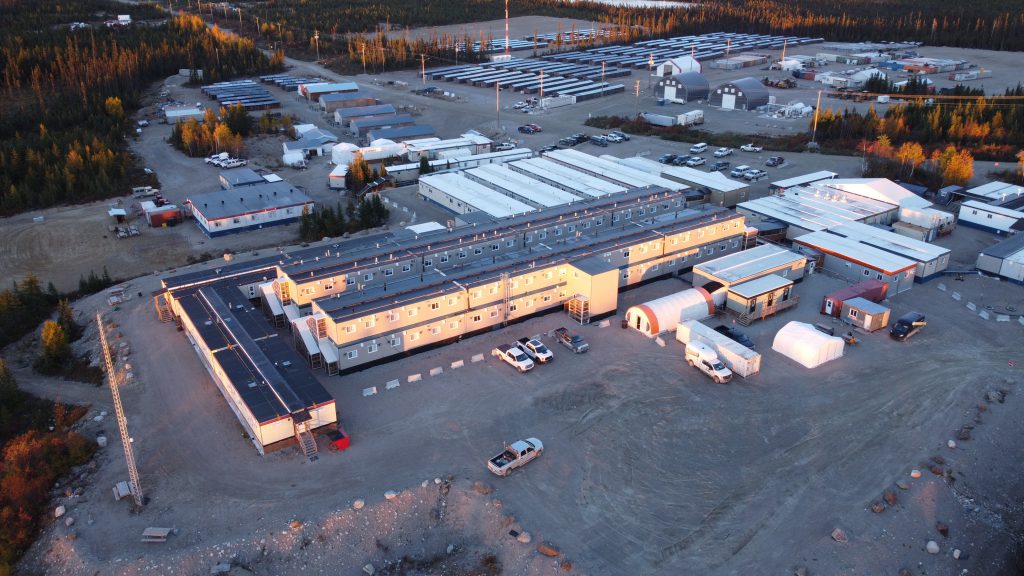JV Article: New tax disincentive could cripple flow-through share regime

The newly revised Alternative Minimum Tax (AMT) introduced in the 2023 Federal Budget that will go into effect on Jan. 1, 2024 will significantly reduce the effectiveness of the newly enacted Critical Mineral Exploration Tax Credit, PearTree Canada founder and CEO Ron Bernbaum says.
The 30% CMETC introduced in the 2022 federal budget applies to flow-through share (FTS) financings for companies exploring for 15 critical minerals including lithium, cobalt, copper, and nickel. Within the first year of the new tax credit, more thanC $350 million was raised in 38 FTS financings. The CMETC credit resulted in new accretive investment.
Of the C$350 million raised in the first 12 months of the CMETC, PearTree funded C$225 million or 64% of all the FTS financings in critical mineral exploration raised from about 1,100 subscribers. The average subscription for the FTS by PearTree clients across Canada was C$239,000.

“In order to invest C$239,000 in flow-through shares in 2023 the taxpayer required approximately C$800,000 in high-rate T4 income in order to take advantage of the exploration tax credit,” Bernbaum explains. “But under the new AMT legislation introduced in the 2023 budget, in order to subscribe for C$239,000 in flow-through shares, the taxpayer will require a minimum of C$1.2 million of taxable T4 income or minimally about 150% more taxable income in order to invest the same amount.”
If the proposed AMT rules had been in effect in 2022, he notes, the same investor would have only invested C$159,333, and by extension, the C$225 million of FTS purchased by PearTree clients would have been reduced to C$150 million, a loss to the Canadian economy of C$75 million in exploration activity, “resulting in fewer jobs in rural and remote communities and a lesser likelihood of finding critical mineral deposits of size and quality to warrant mine development.”
Assuming that most investors in flow-through financings have a similar profile to the PearTree client, then by extension, the C$350 million invested in the first year of the CMETC (April 1, 2022 to March 31, 2023) would be about C$225 million, or job losses associated with direct northern investment of approximately C$125 million.
Alternative Minimum Tax was introduced in 1986 to ensure that all taxpayers pay a minimum level of tax, despite having tax deductions and credits that could otherwise reduce taxable income to zero. With the AMT, the taxpayer first calculates his/ her income under the normal rules followed by an AMT calculation adding back a specific list of deductions and credits, Bernbaum explains. For example, if a taxpayer’s tax liability is C$100,000 under the normal calculation and under the AMT rules the tax owing is C$120,000, then the taxpayer pays C$120,000 and carries forward the unused C$20,000, which remains deductible against income earned in the following seven years, after which the AMT deductions expire.
The current AMT federal tax rate is 15%. When you add in the additional provincial tax the current AMT calculation ensures that no one pays less than about 25% with any unused tax deductions and credits carried forward. Under the new legislation, the government is increasing the federal AMT rate to 20.5% (plus provincial tax taking the total minimum to about 32%). The new legislation also adds back for AMT 100% of all capital gains, which includes the artificial capital gain under the flow-through regime. An FTS has a zero-cost for tax purposes.
Since the exploration sector is dependent on a small group of investors unlikely able to increase their income by 150% in 2024 to maintain their current FTS investments, the industry is concerned that these changes will threaten exploration, effectively eliminating about a third of all FTS investment.
FTS, introduced in the 1970s, are issued by exploration companies and offer investors a 100% tax deduction. From the issuer’s perspective, the FTS command an issue price premium to market, thus reducing dilution. At the same time, the shareholders’ after-tax risk of investment is reduced.
Since 2007, an increasing proportion of all FTS (now about 75% of all FTS) are donated to registered charities. They are then sold right away to global investors at a discount stripped of tax value. The flow-through characterization falls off immediately on the donation/sale. If the shares are issued under a private placement, the liquidity end-buyer from charity must be an ‘accredited investor’ and inherits the four-month hold period. As a result, nearly all FTS end up in the hands of global institutional investors.
“Holistically the flow-through regime is an elegant arrangement in which high net worth urban investors take on venture capital risk with the use of funds directly linked to northern job creation. A dollar of tax deduction in Toronto results in a dollar of taxable activity in Timmins,” Bernbaum notes. “And unlike any other sector, while ownership may be foreign the exploration and development jobs are in Canada and when a mine is built, taxes and government royalties are paid to the Canadian fiscal authorities.”
FTS financings represent over three-quarters of all capital raised for Canadian exploration and PearTree alone deploys over C$500 million a year, funding about 60 financings all within the FTS program.
Under the FTS regime, upon subscription for the FTS, the adjusted cost base is deemed to be nil for tax purposes. When calculating the capital gain, it’s as if the subscribing taxpayer paid nothing for the FTS. The rationale is that the taxpayer fully deducted the cost of the FTS. However, a C$1 tax deduction results in C$1 of taxable activity in northern communities. The capital gains tax levied from a zero-cost base when the shares are sold or donated is in fact a double tax recoupment for the fiscal authority. Under the federal system, an FTS purchased at C$1, if sold for C60¢, will still attract a C60¢ capital gain and attendant tax, he says.
Quebec recognizes the policy anomaly and unlike the other provinces, which integrate their tax regimes with Ottawa, Quebec’s separate tax regime calculates capital gains from the price paid for the FTS in the example ($1).
“Minimally we are not advocating for the elimination of the capital gains tax even though the gain is a construct of the Income Tax Act (Canada), but rather we recommend not adding back into the AMT calculation the capital gain up to the initial purchase price,” he continues. “The simple carve out will go a long way in preserving the incentive and the significant exploration the FTS regime enables in providing Canada with a financing advantage over global competitors exploring for critical minerals and otherwise.”
Moreover, adding back to income 50% of the donation receipt — limiting donations of FTS or even cash under an Alternative Minimum Tax regime — will result in reduced funds to FTS issuers and to charities. “The new AMT rules are a significant disincentive for Canadians giving away their wealth with particular reduction in FTS financings driving critical mineral exploration and more broadly,” he says. “Tax incentives such as the current CMETC work. Tax disincentives are equally destructive in reducing both investment and the donated transfer of wealth in support of social causes.”
The preceding Joint-Venture Article is PROMOTED CONTENT sponsored by PearTree Canada and its subsidiary, PearTree Securities, and produced in cooperation with Mining.com. Visit www.peartreecanada.com for more information.
Comments